












LOCAL COUPLE BOOSTS UPTOWN NIGHTLIFE

















LOCAL COUPLE BOOSTS UPTOWN NIGHTLIFE






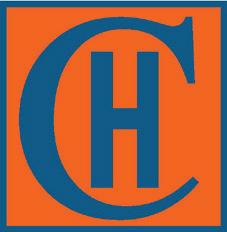

ASSOCIATE PUBLISHER
EDITOR Samantha Campos


Jackie Mujica
GRAPHIC DESIGNER Elena Razgonov
EDITORIAL DESIGNER
Phaedra Strecher Heinen
ADVERTISING
Lisa Santos
ADVERTISING ACCOUNT MANAGERS
Danielle McCoy
Ben Grambergu
Mercedes Murolo
Lynda Rael
Sharon Zuberbier
CEO/EXECUTIVE EDITOR
Dan Pulcrano
DIRECTOR OF CREATIVE SERVICES
Cindy Couling





The first time I entered the dark and vibey realm of Uptown’s Bar Shiru, I was transported. The whole space is a shrine to jazz, where vinyl records are revered by a world-class sound system, thoughtful curation and hushed voices. Portraits of the greats and an imposing wall of albums set the scene. It feels simultaneously like a nod to Oakland’s rich jazz history and a promising peek into its revitalized Uptown future.
Daniel Gahr and Shirin Raza opened Bar Shiru in 2019, inspired by their travels to Tokyo and its audiophile bars, where the impetus is largely, “Talk less, listen more.” Now that’s an idea I can certainly get behind. Gahr and Raza also recently opened their second spot Uptown, Gold Palm, a bar and restaurant across from the Fox Theater. It’s a bold yet hopeful move, predicated on the possibilities of Oakland’s artistic
Nico Bianchi is an East Bay native who’s been published in the NCGA Magazine, McKellar Magazine and subtletees.com.
abundances rather than its recent turmoils—and a sentiment I also share.
“Certainly in the 21st century, we consider Oakland to be the musical and cultural heart and soul of the Bay Area,” Gahr said.
As an epicurean and aesthete, I’m delighted by this issue. Our focus on food and drink includes a foray into the worlds of craft ciders and spice shops, of which there are plenty in the East Bay. In these pages, we also celebrate music and art across the bay. SFJAZZ, the world’s largest nonprofit jazz presenter since 1983, is now under the leadership of executive artistic director, renowned jazz trumpeter and composer Terence Blanchard. Their annual jazz festival returns to SFJAZZ Center in June.
Meanwhile, SFMOMA honors acclaimed modernist artist Ruth Asawa with a retrospective featuring her diverse works, including looped and tied-wire sculptures, clay and bronze casts, masks,
Je rey Edalatpour writes about arts, food and culture for SF Weekly, Metro Silicon Valley, East Bay Express and KQED Arts.
Lou Fancher has been published in Diablo Magazine, Oakland Tribune, InDance, San Francisco Classical Voice, SF Weekly, WIRED.com and elsewhere.


paperfolds, paintings, drawings and public art projects. The exhibition, which runs through Sept. 2, includes more than 300 works across 12 gallery spaces, as well as a recreation of her gorgeous Noe Valley home garden and art-filled living room. Having recently explored this exhibit, I was struck by Asawa’s determined and prolific creativity, innovation and commitment to her art, her family and community, often seamlessly integrating all. This integration of life and art is a powerful reminder of the potential for imagination and connection in our everyday existence.
Samantha Campos
Andrew Gilbert is a writer based in Berkeley who covers music and dance for numerous publications, including the San Francisco Chronicle, KQED Arts, Berkeleyside and San Francisco Classical Voice
Janis Hashe regularly contributes to the East Bay Express and other Bay Area publications.
Garbageisamanufacturedproduct,created whenotherwiserecoverableresourcesare mixedandmashedtogether.Mostroomsin everybuildingin thewholecountry haveabasket wherethis manufacturing begins.Discarded resourcesareput inonebyone, thendumpedinto alargerbin,and thenintoatruck withamore modernbodybasedonthisone.A hydraulicpistonsmasheseverything together.Theobjectiveistopackinmore cargobeforethetruckhastobedrivento whereitcandumpontotheland,tobe covered ina“sanitary“way.Liquidsleach outandmaketheirwayintotheplanet's
Garbage is a manufactured product, created when otherwise recoverable resources are mixed and mashed together. Most rooms in every building in the whole country have a basket where this begins. Discarded resources are put in one by one, then dumped into a larger bin, and then into a truck with a more modern body based on this one. A hydraulic piston smashes everything together. The objective is to pack in more cargo before the truck has to be driven to where it can dump onto the land, to be in a “sanitary“ way. Liquids leach out and make their way into the planet's


water eventually. These “sanitary” methods of filling the land (hence “sanitary landfills”) also provide for anaerobic decomposition of organic materials – which makes
water—eventually.These“sanitary” methodsoffillingtheland(hence“sanitary landfills”)alsoprovideforanaerobic decompositionof organicmaterials –whichmakes methane.
Landfills are the largest source of methane. In the short term methane is 80-100 times
more powerful than carbon dioxide to warm the planet.
Landfillsare thelargest human-created sourceof methane.Inthe shortterm methaneis 80-100times morepowerfulthancarbondioxideto warmtheplanet.
Makinggarbagechangestheclimate!
Ifyou'renotforZeroWaste, howmuchwasteareyoufor?
If you're not for Zero Waste, how much waste are you for?
NASA'sAstronomyPictureof theDayfromFebruary12, 2002,coloredthemethanein theEarth'satmospheregreen, andananimationshowedhowit spinstothepoles.NASAsaid, “Methane(CH4)issecondonly tocarbondioxide(CO2)in creatingawarminggreenhouse effect…. ThelargestabundancereleasedbytheUS…is createdwhen anaerobic bacteriabreakdowncarbon-based garbage inlandfills.” [Emphasisadded.]
NASA's Astronomy Picture of the Day from February 12, 2002, colored the methane in the Earth's atmosphere green, and an animation showed how it spins to the poles NASA said, “Methane (CH4) is second only to carbon dioxide (CO2) in creating a warming greenhouse effect …. The largest abundance released by the US … is created when bacteria break down carbon-based in landfills.” [Emphasis added ]

UrbanOrehasbeensalvagingforreuseinBerkeley since1981.Wehave3acresofsecondhandgoods, open360daysayearuntil5:00PM,900MurraySt. near7thxAshby.Comeshop.
Urban Ore has been salvaging for reuse in Berkeley since 1981. We have 3 acres of secondhand goods, open 360 days a year until 5:00PM, 900 Murray St. near 7th x Ashby. Come shop.



of the world’s
BY Janis Hashe
Both the use and the mystique of spices goes back centuries. Ancient Egyptians used spices such as coriander, cumin, myrrh, frankincense, cinnamon and ginger in cooking—and also mummification.
The ancient Chinese developed the classic “five-spice blend” of cinnamon, cloves, fennel seeds, star anise and Szechuan peppercorns. In Africa, spices such as pepper, cardamom, cumin and ginger were used as currency, as well as in cooking. The Aztecs and Mayans used allspice and white cinnamon, among other spices.
Highly valued as preservatives, spices commanded premium prices during the Middle Ages in Europe, as they had to be shipped overland or imported by ship.
The Molucca Islands in Indonesia, even today still called the Spice Islands, were the largest producers of mace, nutmeg, cloves and pepper in the world.
Fast forward to the East Bay today, and the spice scene is flourishing. Flagship shop Oaktown Spice Shop—despite

«
its name, also in Albany—was named “one of the world’s best spice shops” by Food & Wine magazine.
And tucked into mini-malls or frontand-center on major streets are other stores, some of which have been around for decades, where spice-lovers can revel in wide selections. Some shops focus on spices from certain areas of the world.
Such is the case with Brundo Ethiopian Spice Company in Oakland. General manager Daniel Aderaw Yeshiwas explained the evolution of the spice shop from the restaurant Cafe Colucci, opened in Berkeley in 1991. Getting authentic, top-quality spices from Ethiopia was a challenge—so much so that the restaurant’s founder, Fettlework Te eri, returned to Ethiopia and established a small-scale spice production facility in Modjo, a village a few hours from the capital, Addis Ababa.
As spice production grew, “We asked ourselves, ‘Why not sell these?’” said Yeshiwas. And Brundo means “good food in a messob, the traditional basket that Ethiopian food is often served in,”


SERENDIPITY BIZ Old Salt Merchants is a minority woman-owned shop and online retailer in Berkeley with a unique selection of spices, spice blends and herbs.
according to the shop’s website. “Walking into the store is an immersive experience,” he added, in regard to the scents, the colors, the vibe.
Some of Brundo’s most popular spices and blends are its berbere (Ethiopian chili pepper blend), korerima (black cardamom) and mitmita (hot chili blend). Other spice
blends are mekelesha (cinnamon, black cardamom, black pepper, nutmeg, among others) and makulaya (fenugreek, ginger, black pepper, among others).
Yeshiwas agrees that broader exposure to Ethiopian cuisine in urban areas has led to much higher demand for the spices needed to prepare it at home. The Brundo website has a tab for recipes and is also the way to order online.
Brundo prides itself on its relationship with Ethiopian farmers, encouraging the economy of the country, while providing access to the best-quality herbs and spices. 5849 San Pablo Ave., Oakland. 510.601.7999, brundo.com.
Also in The Town is Oakland Spice Blend—not to be confused with Oaktown Spice Shop. A small place on Shattuck Avenue, without even a website, it has received rave reviews from patrons. “It is an excellent little store with emphasis on product from Ethiopia and Eritrea, but also greater Middle East and East Africa. I particularly like their taita (injera),” wrote one. “It is fresh made at the store, from authentic ingredients …























fondly reminds me of my mom baking fresh injera back home. The store is very clean and the people very courteous and friendly.”
5873 Shattuck Ave., Oakland. 510.250.9398.
In Berkeley, the Bombay Spice House is a South Asian supermarket carrying products, including spices, from India, Sri Lanka, China, Nepal, Tibet and Bangladesh, among other countries. Open since 1973, it has been named “Best in the Bay” multiple times and receives raves from customers for friendly service and range of offerings.
“The options feel endless!” wrote one shopper. “I was looking for ingredients to make chai at home, and the staff was helpful. Spices galore, as well as great grocery items; you should def stop in and check it out.”
Those seeking variations on the classic Indian spice blend garam masala (black peppercorns, cardamom, cinnamon,
cloves, cumin, coriander seeds, nutmeg, mustard seeds) will find them here, along with other favorite Indian cuisine spices, such as turmeric.
1036 University Ave., Berkeley. 510.845.5200, bombayspicehouse.org.
Old Salt Merchants is a minority womanowned shop and online retailer in Berkeley with a unique selection of spices, spice blends and herbs, including Tunisian harissa (dried chili pepper paste, garlic), Aleppo pepper (crushed red peppers), Saigon cinnamon and Moroccan Bazaar Blend (Ras El Hanout), which classically contains 30-40 different ingredients, used to add a unique flavor to tagines and other dishes.
Owner Monique Rodriguez got into the spice and other condiments business by, as she said, serendipity. Having created a food blog to display her food photography, she segued into making gift sets of spices for friends. She contacted a retailer in Seattle, Old Salt Merchants, about buying some of
WORLD MARKET Bombay Spice House is a South Asian supermarket in Berkeley carrying products, including spices, from India, Sri Lanka, China, Nepal, Tibet and Bangladesh, among other countries.
the unique square jars they used—and this led to a conversation about her buying the business. Which she took a deep breath and did.
She launched the e-tail version in 2019, and has had the brick-and-mortar location in Berkeley’s Elmwood district for three years. Old Salt Merchants uses a blending expert who’s been in business for 50 years, taking the spices sourced from all over the world, and creating top-quality spice, sugar and salt blends.
In addition to the blends and spices mentioned previously, Rodriguez pointed to the Santorini Party Blend and the Amalfi Coast Blend as customer favorites. A new product, just being added, is Mexican Mole, which she expects to be a top seller.
“Our products have bold, intense flavors,” she said. The shop provides a sampling table, where people can try out spices and blends new to them before purchasing.
Other customer perks include: in-store “meet the maker” events, an email list that entitles participants to monthly offers or discounts and free gift wrapping, as the store sells many combinations of products as gifts.
Rodriguez also noted that Old Salt Merchants’ items are now available in the “Shop the Town” store at the Oakland Airport, which opened in March.
2935 College Ave., Berkeley. 888.995.SALT, oldsaltmerchants.com.
If variety is the spice of life, might not spice be the variety of life?
Oaktown Spice Shop 546 Grand Ave., Oakland, 510.201.5400. 1224 Solano Ave., Albany, 510.356.4667. oaktownspiceshop.com.
Lhasa Karnak Herb Co.
2506 San Pablo Ave., Berkeley, 510.548.0380. 1942 Shattuck Ave., Berkeley, 510.548.0372. lhasakarnak.com.
William’s Natural Foods
12249 San Pablo Ave., Richmond, 510.232.1911. williamsnaturalfoods.com.
El Charro Super Mercado
1502 Fruitvale Ave., Oakland, 510.434.1301.

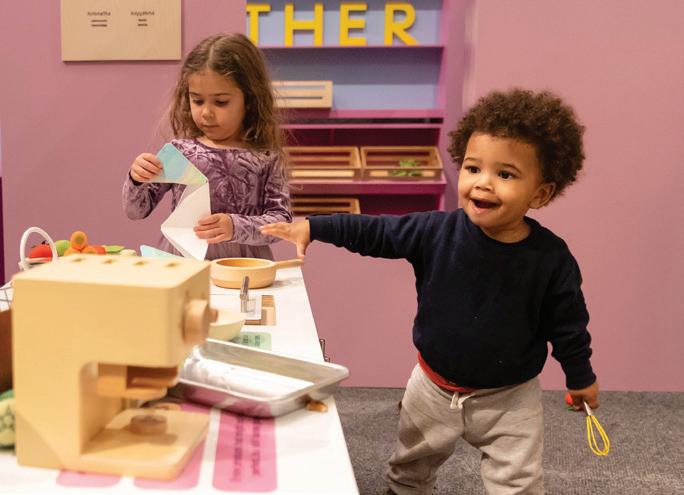




What are my options for senior living? What if my parents have different needs? What if those needs change? At Belmont Village, we know that each family is unique and that choosing the right senior living option matters. Our experienced advisors will help you ask the questions you need to get the answers your family deserves. We’re here to help. Just ask.




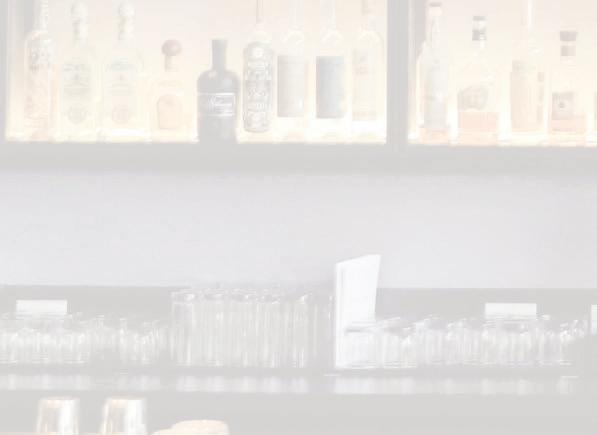






global
BY Je rey Edalatpour


In Haruki Murakami’s novels, the melancholic main character will inevitably stave o his ennui by spending time in a smoke-filled, boozy jazz club. The clubs are not only o the beaten path, but they may exist in a parallel universe. In my mind, the interiors look like the subterranean bars in Bell, Book and Candle or Ripley. During a 2015 trip to Japan, Daniel Gahr and Shirin Raza stumbled into one of these otherworldly clubs in Tokyo’s Ebisu district.










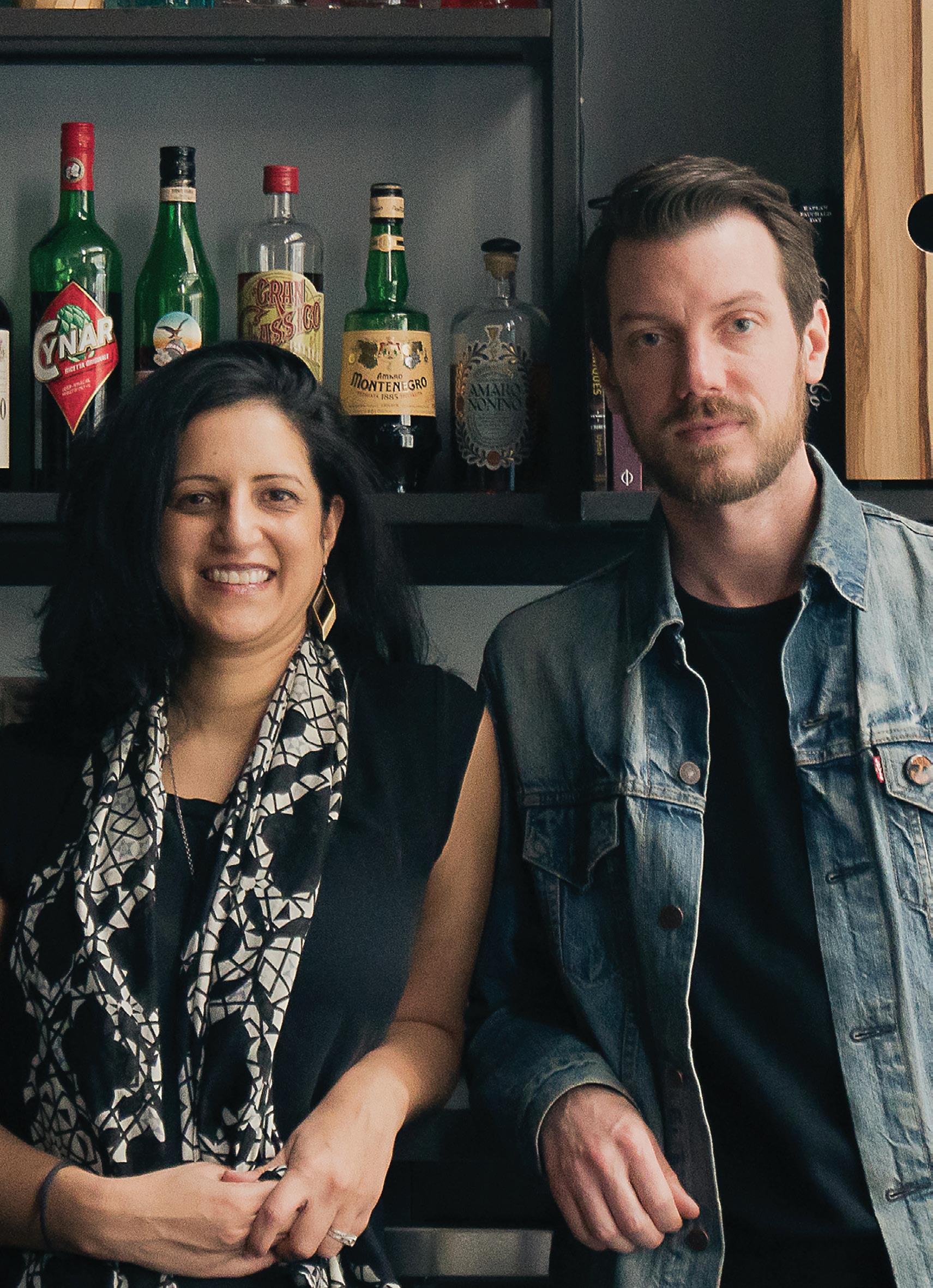
In a phone interview, Gahr described his and Raza’s visit abroad to Bar Martha. “It’s a group that has three or four di erent hi-fi bars, each with a di erent character and vibe,” he said. “Each one has a beautifully appointed stereo system and an amazing, eclectic collection of records often rooted in American mid-century jazz and soul.”
Photos aren’t allowed to be taken inside Bar Martha, a fact that amplifies its rarefied air of coolness. Of the few images

that have leaked into the public domain, it looks like Gahr and Raza managed to evoke something similar when they opened Bar Shiru in 2019, “The Bay Area’s first hi-fi listening bar.”

became these community centers built around music,” he added.
Gahr and Raza are co-owners of Bar Shiru and, since last fall, Gold Palm, which opened in Palmetto’s former space. Raza is the general manager of both establishments, and Gahr is the creative director. Before they opened Bar Shiru, Gahr had been working at Pandora. The o ces are nearby in the uptown/ downtown neighborhoods. They chose to open a bar there because they loved the
“What really impressed us [about Bar Martha] was the vision and the hospitality, the way that music was at the center of the experience,” Gahr explained. In Japan, Bar Martha serves whiskey and beer, but the larger goal is to present Western records that aren’t generally available there. “They »
« musical energy, the overall nightlife and the general feeling of hospitality.
“Certainly in the 21st century, we consider Oakland to be the musical and cultural heart and soul of the Bay Area,” Gahr said.
Although Bar Shiru survived the pandemic, he noted that the landscape of running a business in Oakland remains incredibly challenging for “myriad reasons.” The cost of goods, labor and insurance continues to dramatically increase. Bar Shiru, said Gahr, has never turned a profit. Despite the fiscal challenges, the couple decided to open Gold Palm, which is a few blocks away from Bar Shiru. When Palmetto closed at the end of 2023, their business experienced a proximity-related revenue dip.
“The more things there are in a neighborhood for people to go and do, the more people will make a night of it,” Gahr observed. “That’s just Urban Density 101, right?”
After Palmetto’s doors remained closed for several months, Gahr and Raza started to explore the idea of opening a second bar there. “We thought about the uniqueness of 1900 Telegraph and the fact that it has two fully-built bars with a kitchen in between,” Gahr recalled. It’s one lease and one liquor license, but there are two spaces within it. With that practical selling point, they also wanted to be a part of the revitalization of the neighborhood.
Gold Palm serves alcohol and food. The menu features Pakistani-inspired small plates. Many of the recipes are from Raza’s mother. Moonglow is a second “speakeasy” bar within Gold Palm that has a midnight blue entrance adorned with a crescent moon.
“The music’s totally different, kind of dark and moody,” Gahr explained. “A martini den with underground electronic music as the soundtrack.”
That type of music, he said, is normally nomadic. Moonglow provides a home for




MUSIC POWERED In addition to nightly curated vinyl programming, Bar Shiru hosts weekly events to encourage ‘slow listening,’ like High Fidelity Listening Sessions, Selector Series and Silent Sundays.
people to hear house or techno music, “things that are a little more experimental.”
Working within the parameters of a business partnership and a marriage, Gahr and Raza have ongoing conversations about how to implement new ideas. They started “Spoiler Alert” in January, “a get together for film and TV nerds.” Gahr admits that it can be hard to separate their professional and private personas, to sever the conversations between their innies and outies.
The couple is often at one or the other bar for 12 to 14-hour days, sometimes seven days a week. It was a no-brainer for the monthly gathering to start with the new season of Severance
1900 TELEGRAPH

Spoiler Alert doesn’t screen media but does create a space for “super fans to hang out and talk.” Gahr said he watched the first season of Severance five times, adding, “and I’ve watched every episode of this season at least twice.” His obsession aside, he said the underlying idea for the gathering is to, “tap into something that’s hitting the cultural moment.”
Directly across the street from the Fox Theater, Gold Palm is also holding a regular happy hour for nonprofits called “Togetherness.” In March, they held a small business meet-up for Oakland Rising and Restore Oakland. “We want to continue to expand upon these community-minded things and have more reasons for people to come out,” Gahr said.

Since they’ve been open, Bar Shiru and Gold Palm have become anchor businesses on Telegraph Avenue. “We are involved in many collectives, groups and text threads,” he said. “There are so many people fighting for Oakland and so many business owners who really want to be here and stay here.”
Gold Palm, open 5pm-midnight Tue to Sat, 1900 Telegraph Ave., Oakland. 510.705.1958. goldpalmoakland.com.
Bar Shiru, open at 5pm Mon to Sat, 1611 Telegraph Ave., Oakland. barshiru.com.







BY Nico Bianchi
It was four months ago when I was first introduced to the craft cider world. A winemaker friend in Livermore had taken my brother and I on a tour of what had to be 40 acres of vines and hundreds of thousands of dollars worth of the latest fermentation equipment and brand new French oak barrels. We tried everything from cabernet pfei er to chardonnay to ramato.


But what really caught our attention was something that, from our perspective, had nothing to do with wine at all.
“This is my passion project,” our friend said to us, pointing to a blue jug in the corner that looked like it stored gasoline or something else that was flammable. He poured a pink, brown and yellowish liquid into our glasses from a spigot at the bottom. It was cider, it was really good, and we were intrigued.
It’s been a decade or two since craft cidermakers first started to make their mark on the beverage market. Arguably the most well known cider producer, Angry Orchard, began distribution in 2005. Now there are more than 700 cidermakers in the U.S. 20 years later.
While most consumers understand cider as being an alternative to beer—which it can very well be for our gluten-free friends or those just desiring
something carbonated but without tasting like a mouthful of grain—its placement is more like a link between the beer and wine worlds.
“Just think of it as a different kind of white wine,” said Mike Reis, co-owner of Redfield Bar and Bottle Shop in Berkeley. Redfield doesn’t retail cider and beer. They stock cider and natural wine right next to each other. The similarities between the two are undeniable. Just

It’s been a decade or two since craft cidermakers first started to make their mark on the beverage market. Now there are more than 700 cidermakers in the U.S.
like in wine, producers and retailers like Reis care about the element of terroir, the characteristic taste and flavor imparted to a wine by the environment in which it is produced.
Cider producers care about where the apples come from, if the orchard is managed organically or bio-dynamically, specific fermentation and aging vessels, and even the glassware used when tasting. All of these variables directly affect the finished flavor profile.
Can one taste the difference between a pinot noir and a merlot? If so, then they can taste the difference between a Kingston black and a Yarlington mill. Craft cidermakers have a beautiful sense of respect and minimalism when it comes to the single varietal.
“It’s being more of a shepherd than a scientist,” said Thomas Henry. “You can’t manipulate the fruit.”
After a stint in the commercial cider world responsible for mass production and marketing distribution, Henry took
a leap of faith transitioning to his garage in Lafayette and starting Mount Diablo Cider Company.
It’s an experiment in extreme intentionality. He makes 200-300 cases a year, and harvest to glass is a minimum of a year, maximum two and a half years. Henry has hung his hat on the Gravenstein varietal.
Originally from Denmark and brought down to Fort Ross via Russian fur traders, Gravensteins have a tight two-week picking window accompanied by an annual fair, with production mainly in Sebastopol. Henry’s goal was to impart the uniqueness of the land into a Gravenstein cider by working closely with certain types of soil profiles. It resulted in something earthy, robust and balanced. Actual terroir in cider.
Cider production in the East Bay has many forms, from garage-run operations like Mount Diablo to a wholesale monster like Far West Cider Co. in Richmond, the genesis of which took place on




“You’re
• We rebuild all types of windows, and change out glass
• Deck, bridge driveway waterproofing
• Below grade foundation repair and waterproofing
• We love tile roofs
• Structural and dry rot repairs
• Waterproofing & Coatings
So-called modern clad windows start falling apart after 10 years. Restoration will save your investment. See the story on our website: www.kardelcompany.com
Clients receive an original David Lance Goines Poster

a family-run orchard in Ripon. The Chinchiolo family has managed the Lucky You orchard for four generations, growing apples, cherries, plums and pluots, being one of the first orchards in California to consistently grow Fujis.
When the idea struck to use the spare fruit to make cider, Adam and Andrea Chinchiolo went to work. As a result of a grant from the U.S. Department of Agriculture, they’ve cultivated a brand that’s reached into grocers like Whole Foods, Bevmo and Total Wine, making close to 30,000 gallons of cider annually.
Another local pillar is Blindwood in San Leandro. Founder Drew Gabel started with a dream and a food-grade IBC tote, a container mainly used for shipping, in his garage in Hayward. They produce intricately flavored ciders like their flagship
ginger peppercorn or their seasonal “Spring Forward” with lavender, lemon zest and thyme, as well as single varietal staples and experimental co-ferments like Gravenstein cider mixed with Aglianico pumice, an Italian red grape.
Blindwood harbors a community as exuberant and vivacious as their ciders. From taproom regulars to passersby, it’s an eclectic group signature to San Leandro.
“Before, our cider was just a product,” said Gabel. “With the taproom, we’ve actually been able to tell our story.”
Cider has a tight-knit community that rivals in the most loyal of niche fanbases. Flora and Ferment, a cider bar and retail store in downtown Albany, hosts a “Meet the Makers” event. It’s an opportunity where cider lovers and producers are simply able to converse and commune
though the common medium of cider. Unlike other beverage professions, cider producers not only share their methods with the drinking public but with fellow producers as well. The market is in such need for great cider that there isn’t room for hostilities. Great cider production is good for all cider production.
“I’ve never felt as welcome anywhere as in the world of cider,” said Drew’s wife, Cathy Gabel, of Blindwood.
Mount Diablo Cider Co.
“Native Son” ($22.95)
Blindwood Cider Co.
“Kingston Black” ($17)
Far West Cider Co.
“You Guava Be Kidding Me” ($20 for a 12 oz. 4-pack)











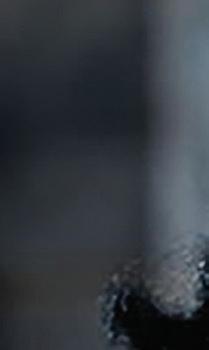


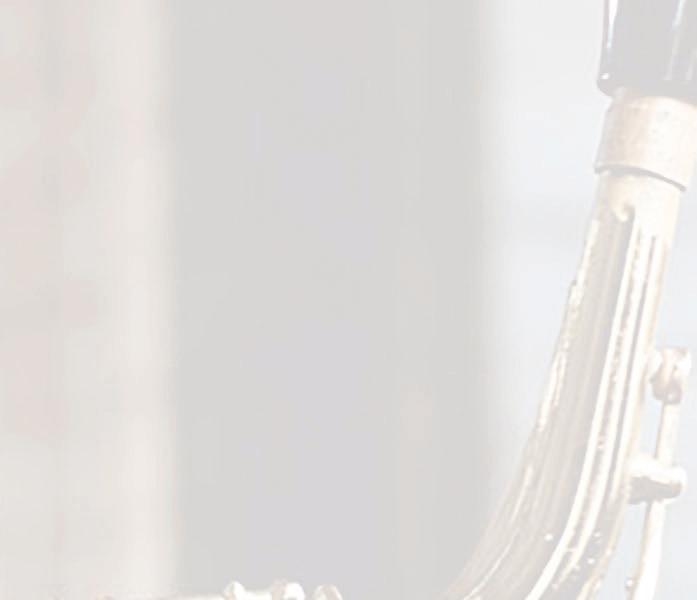



BY Andrew Gilbert


For the casual music fan, the transition at SFJAZZ from the organization’s founder, Randall Kline, to trumpeter Terence Blanchard has been a seamless a air.
Week by week, the roster of artists performing in the SFJAZZ Center’s 700-seat Miner Auditorium and intimate 107-seat Joe Henderson Lab looks much the same in 2025 as it did in 2023. At least, that was the case until the organization unveiled the radically reimagined San Francisco Jazz Festival (SFJF), an event long overdue for conceptual update.

Running Friday-Sunday, June 13-15, the SFJF is now a proper buzz-generating festival, featuring some three-dozen concerts across multiple stages at the SFJAZZ Center and the Festival Tent



covering an adjacent parking lot at Franklin and Oak. With DJs, food, wine and beer vendors, and art and vinyl merchants ensconced at each venue, the festival o ers an array of access options, including limited full-access VIP and three-day passes, single-day passes and venue specific passes.
Showcasing a bevy of top improvisers, from venerable NEA jazz masters and mid-career virtuosos to under-the-radar stalwarts and rising stars, the lineup bristles with talent, including many artists who’ve never previously performed at the SFJAZZ Center.
“We’re trying to o er a variety of artists, but all very much rooted in jazz,” said Burkhard Hopper, who took over as Blanchard’s right-hand man last fall, serving as SFJAZZ’s director of artistic programming. “These days,



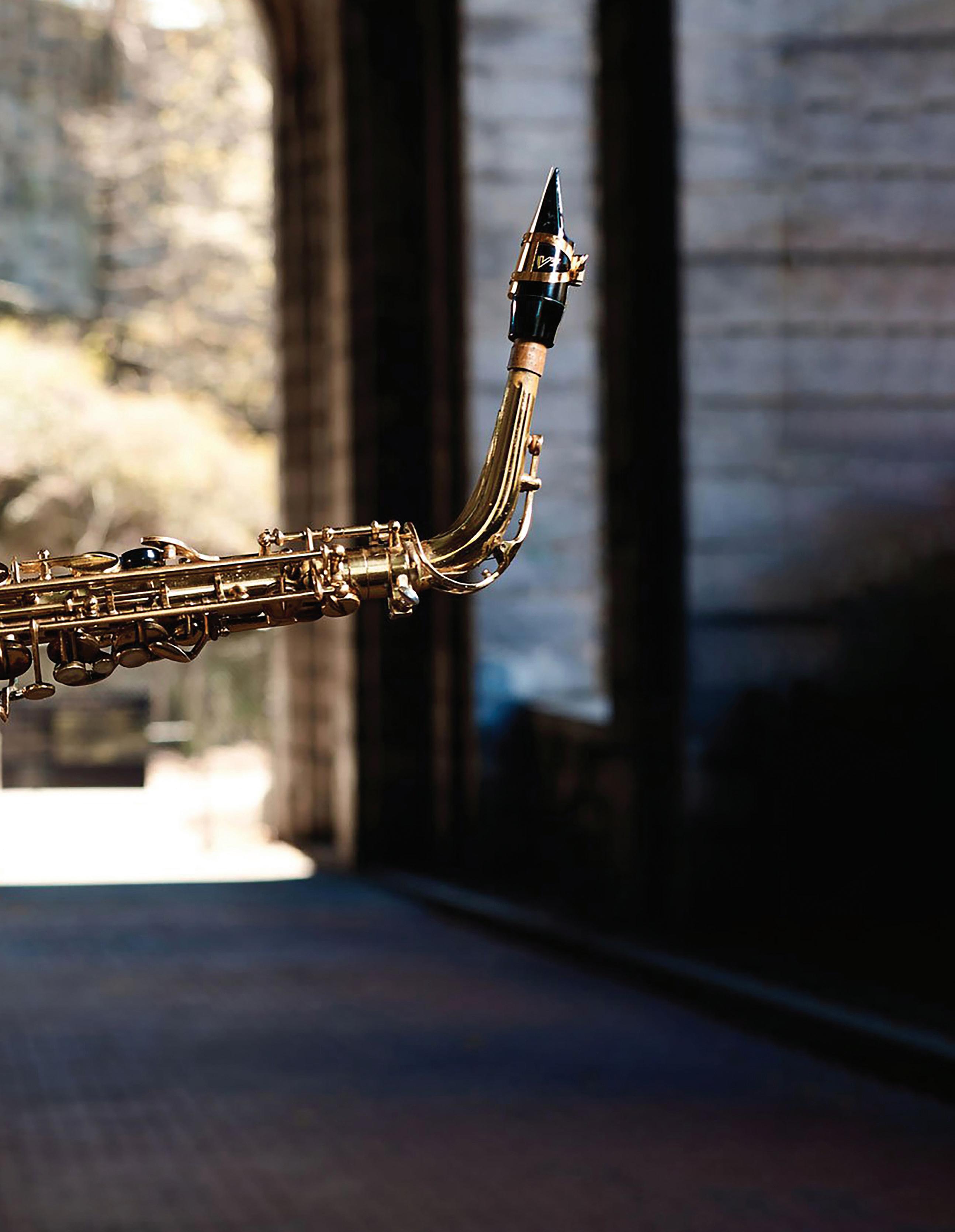
ARTIST-AT-LARGE Trumpeter

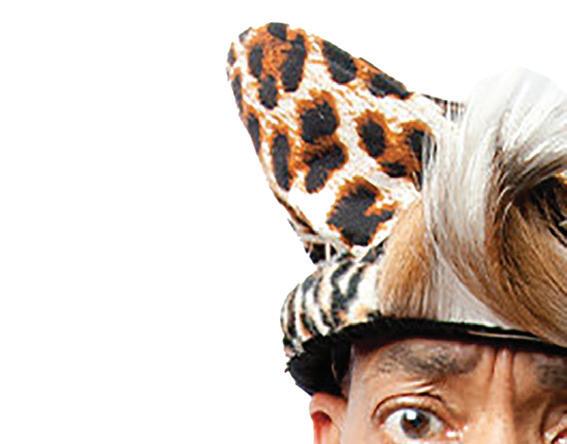



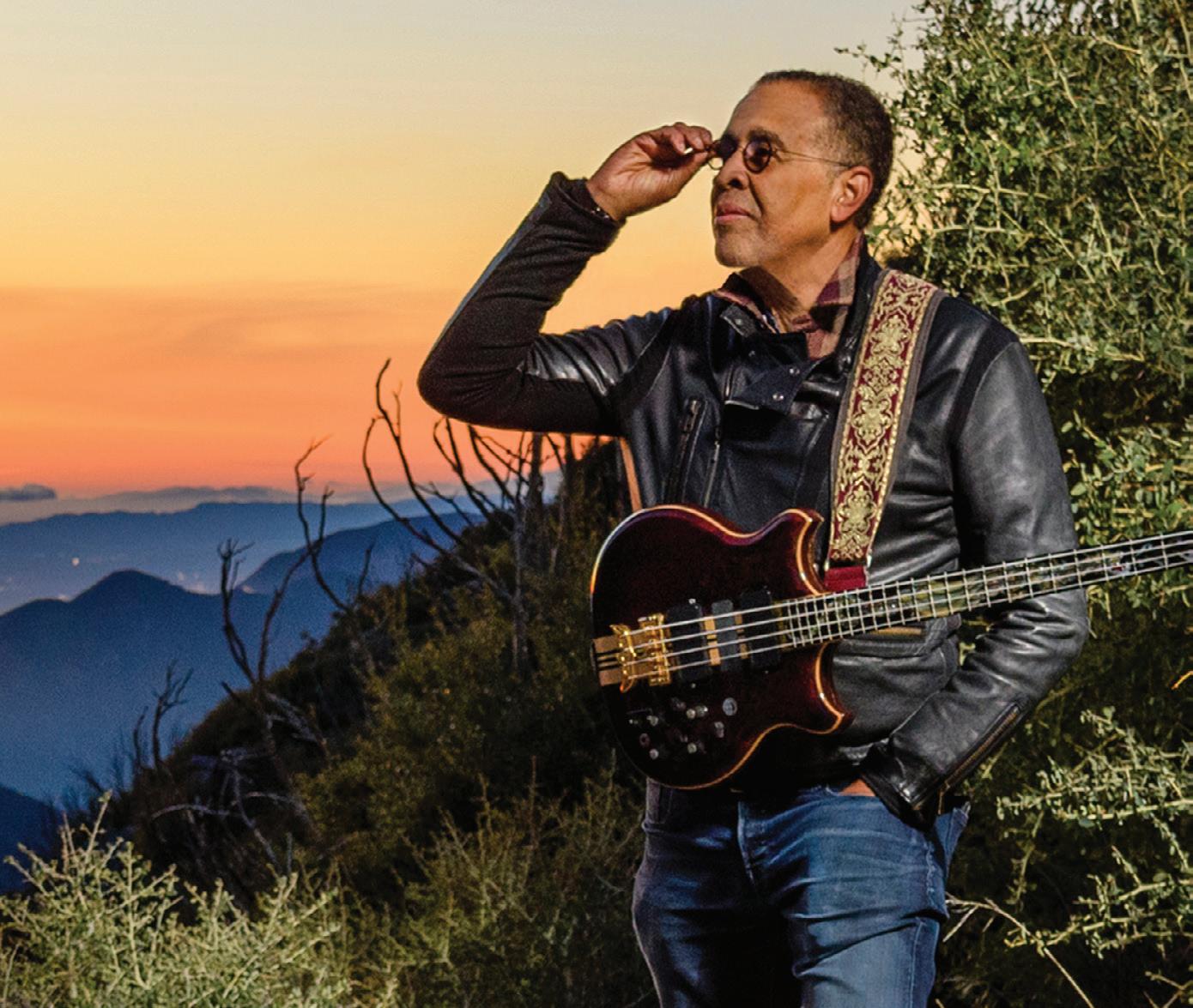

a lot of festivals call themselves jazz, but move away from the music. It was very important for this festival to be identifiably ‘jazz.’”
Almost as important, the SFJF is now identifiably a goddam festival. For more than a decade after SFJAZZ opened the nation’s first and only stand-alone concert hall constructed with jazz in mind, it continued to produce a “festival” built on a model developed when it was an itinerant presenter without a venue to call home.


Kline founded the organization in 1983 as Jazz In The City, a concert series that focused on jazz masters living in the Bay Area, particularly tenor saxophonist Joe Henderson, drummer Tony Williams, vibraphonist Bobby Hutcherson, conguero Francisco Aguabella, vocalist Mary Stallings and percussionist John Santos (sadly, only the latter two are still with us).


By 1992, the rapidly growing organization adopted a new moniker and consolidated its concerts and educational programming as the
three-week San Francisco Jazz Festival as part of the milestone 10th season. Presenting in theaters and clubs around the city, the festival was a moveable feast, with the action concentrated on the weekends. But it was always more of a concert series than an overlapping, cornucopian multi-act event, a la the Monterey Jazz Festival or San Jose Jazz’s Summer Fest.
Now SFJAZZ has joined the party with its own particular vision. Each day of the festival is headlined by artists who define the 21st century scene, while building on hugely consequential contributions from the 20th century, starting with tenor saxophonist and flutist Charles Lloyd.
Friday’s program also includes newly ascendant alto saxophonist Lakecia Benjamin and the Phoenix Quartet, Grammy Award-winning vocalist Kurt Elling with the SFJAZZ Collective, and bassist Don Was and the Pan-Detroit Ensemble (the longtime head of storied Blue Note Records, Was is the honoree at the annual SFJAZZ Gala June 12).
Lloyd is a savvy choice to kick o the festival, and not just because he’s still a transcendent improviser at 87. Joined by his superlative Sky Quartet with pianist Jason Moran, Peninsula-raised bassist Larry Grenadier and former SFJAZZ Collective drummer Eric Harland, Lloyd adds another thread to a vividly multihued garment he’s been weaving since he introduced an epochal young band at



























El Matador in North Beach in 1966.
His quartet with the unknown pianist Keith Jarrett, bassist Cecil McBee and drummer Jack DeJohnette caught the ear of an ambitious impresario named Bill Graham, “who invited us to play an afternoon for half an hour or so at the Fillmore, and they wouldn’t let us off the stage,” Lloyd told me in a 2007 interview.
“We were in our mid 20s, and they heard the authenticity. We were playing opposite Muddy Waters, and I had played with him and Howlin’ Wolf and those people in Memphis. I come from the blues experience, and the Paul Butterfield Blues Band was there,” said Lloyd. “We were invited back, and we became popular from playing at the Fillmore. I remember Jerry Garcia said that our record, Dreamweaver, was the most influential record for the Grateful Dead.”
Lloyd’s unlikely transformation into the Flower Power generation’s favorite jazz musician took place down the road at Monterey later that year when he blew away the audience at the Monterey Jazz Festival, an encounter captured on the hit Atlantic album, Forest Flower. Through the rest of the decade, Lloyd and the quartet played to huge audiences, including a groundbreaking appearance in the former Soviet Union.
Albums such as The Flowering, Charles Lloyd in Europe and Love-In garnered airplay on free-form FM radio and sold as well as records by major rock bands. A mainstay at SFJAZZ for decades, Lloyd established his relationship with the late tabla legend Zakir Hussain at a Grace Cathedral “Sacred Spaces” concert in 2001, a few weeks after Sept. 11.
Saturday’s program features the protean duo of bass star Stanley Clarke and Cuban piano master Gonzalo Rubalcaba, powerhouse vocalist Lisa Fischer, New Orleans trumpet star Nicholas Payton, the Soul Rebels and pianist Jahari Stampley’s Trio. The festival closes Sunday with headliner Patrice Rushen, who’s making her first SFJAZZ appearance as a leader with a combustible jazz/funk combo that includes rising guitarist Enzo Iannello and veteran drummer Rayford Griffin (who has toured widely with Stanley Clarke and Jean-Luc Ponty).
The program also features charismatic

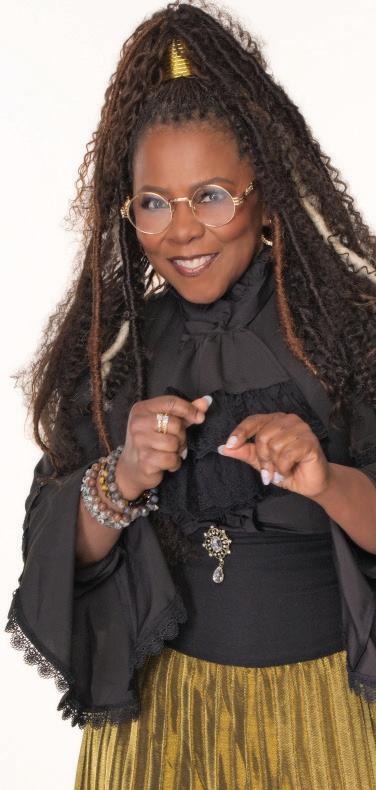
Cuban vocalist Cimafunk, who made a brilliant appearance with Chucho Valdés and Irakere 50 at the Paramount in February, the duo of bass great Dave Holland and Beninese guitarist Lionel Loueke, pianist Orrin Evans, and the duo of Berkeley trumpet star Ambrose Akinmusire and New Orleans pianist Sullivan Fortner. Blanchard, dubbed “artist-at-large,” will be roaming the festival with his horn throughout the weekend, joining in wherever he sees fit.
“That’s why he’s not playing with his own band,” Hopper said. “Terence will be sitting in with different acts. It’s a festival, and there’s supposed to be a spontaneous thing about it. We’ve also put together encounters that have never happened before, like Kurt Elling singing with the SFJAZZ Collective.”
That’s a whole lot of exciting music, and it pains me to cast a little rain on this second-line parade. But the absence of Bay Area acts on the program is too conspicuous to go unmentioned. There’s no shortage of East Bay pride in the international success of Akinmusire, but the festival doesn’t get credit for booking him despite his local address. As a trumpeter, composer and educator, he’s a global cat.
So that leaves only one act, Afrofuturist saxophonist saxophonist/ composer Adris Ackamoor and the Ankhestra. He’s also an international creative force, but this is his first SFJAZZ appearance, which speaks to the long-running tensions between the organization and the local scene.
Bay Area artists who have taken SFJAZZ to task about the lack of attention have often been told that it’s a simple matter of ticket sales. It’s hard for a resident artist to fill Minor Auditorium, and even selling out two Joe Henderson Lab shows can take a lot of footwork. But at a festival where there are three or four “small print” acts each program at the bottom of the roster, with no particular pressure to bring out an audience, it seems like a major missed opportunity to present local treasures alongside out-oftown artists.
Adam Theis, the multi-instrumentalist, composer, bandleader and don of the Jazz Mafia collective, has forged close ties with SFJAZZ. For seven years before the
»



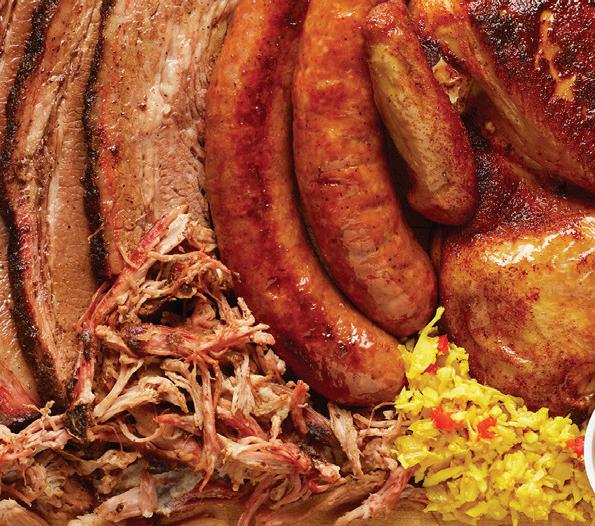











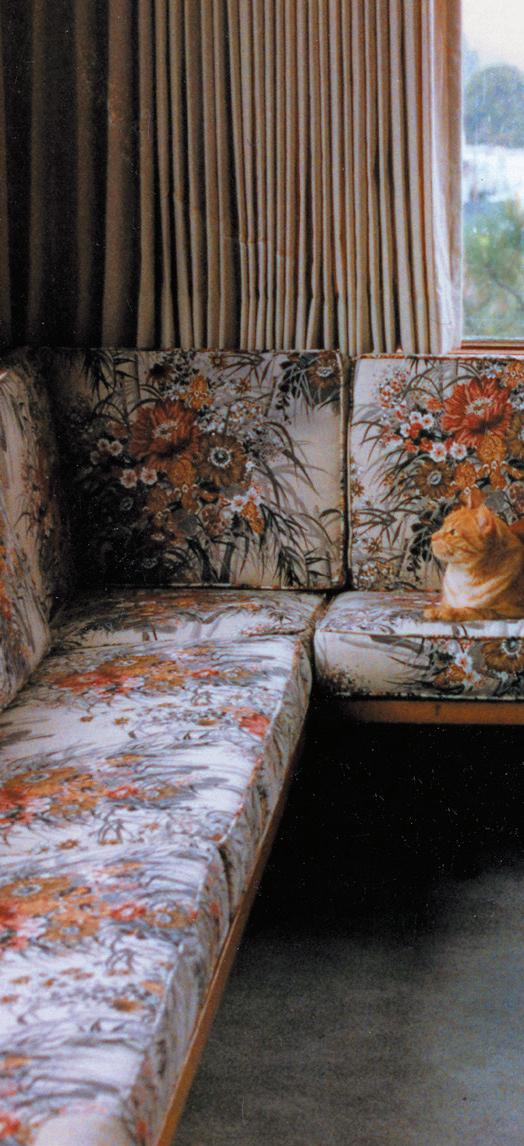


pandemic, he led the Monday Night Band at the SFJAZZ Center. And when he first glanced at the SFJF program, “I was in a hurry looking at the lineup on my phone, thinking, there’s probably a page two I didn’t see, a supplemental page that’s got more the local stu ,” he said. “I was wrong, I guess.”
He’s a fan of the organization who wants to see it succeed. And he speaks for much of the local scene when he says, “We all want the Bay represented.” As an artist who has booked hundreds of shows and works closely with venues like the Sound Room in Oakland and Keys Jazz Bistro in North Beach, where Jazz Mafia combos hold down monthly residencies, Theis is intimately acquainted with the necessity of selling tickets.
“For a local artist to do a Minor show is a big push,” he said. “It’s ambitious, but it’s a tall order for a jazz artist. Then Joe Henderson Lab is too small for some groups. This would have been a nice medium, playing before some of these bigger names. It seems like a missed opportunity. But it’s the first time they’re doing it, and it was probably overlooked.”
Rather than flaming the organization, local artists will probably be better served by building bridges. After relocating from Los Angeles for the SFJAZZ position, Hopper is new to the Bay Area and still getting to know the local musical landscape. He points out that the organization continues to book many Bay Area artists in the Joe Henderson Lab, and that the plan is to expand the festival if all goes well.
“Ultimately, this first year is an experiment,” he said. “We’re going to learn a lot from this experience. We’ll use this information for the next one. There are various models on how to enlarge it. This was the conservative version. We’re looking at other venues we could use, presenting other styles and more. We’re extremely optimistic about this.”

Lord knows we need opportunities for bliss and celebration. For now, I’m holding onto the hope that next year will see more San Francisco in the San Francisco Jazz Festival.
San Francisco Jazz Festival, Fri, June 13, 2-9pm; Sat-Sun, June 14-15, 1-10pm; SFJAZZ Center at 201 Franklin St., and Festival Tent & Outdoor Festival Street Market at 110 Franklin St., San Francisco; s azz.org.




















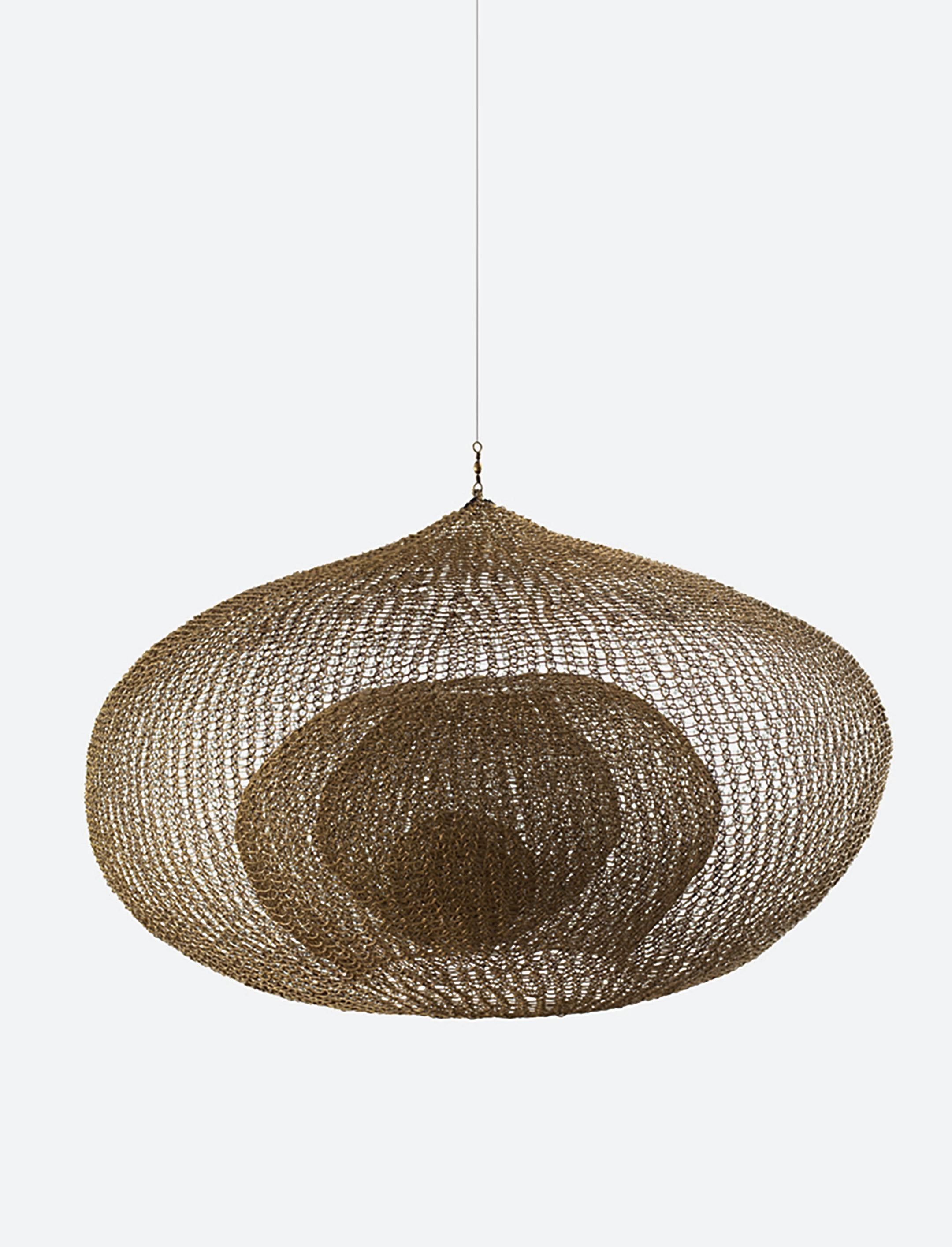


BY Lou Fancher


Isn a fourth floor gallery at the San Francisco Museum of Modern Art, two women stand transfixed. Gazing upward at a hanging sculpture made with galvanized steel wire and lit by a di use spotlight that casts a shadow resembling either a scorpion or an elephant’s head, their inscrutable facial expressions burst into astonishment and delight.
Leaning into each other as if they’re conspiratorially discussing a secret, their voices convey wonder and—a sentiment currently in rare supply—respect minus intimidation and without discomfort.
The artwork inspiring the heady cocktail of emotions and whispered words is one of many bearing the title, “Untitled,” in SFMOMA’s extraordinary exhibition, “Ruth Asawa: Retrospective.” In 12 gallery spaces and more than 300
works, the inarguable creativity and legacy of the late renowned Bay Area artist is revealed. Born in Norwalk, California in 1926, Asawa came to the Bay Area in 1949 and died in San Francisco in 2013.
This is SFMOMA’s first posthumous retrospective of her work. (An all-women group exhibit, “Four Artist-Craftsmen,” in 1954, and a mid-career survey in 1973 preceded the retrospective.)
Featuring her well-known loopedwire sculptures, the exhibit illuminates the full breadth of Asawa’s vision and multifaceted practices. Included are the addition of tied-wire pieces, clay and bronze casts, masks, paperfolds, paintings, drawings, sketchbooks, prints, supersize public art photographs, videos, archival materials, an oral history booth, a garden terrace based on Asawa’s home garden, a semi-recreation of the living room in
the Noe Valley in which she lived and established her studio in 1960 and more. Asawa was raised on the family’s farm. Her seminal life experiences and artistic influences include her family being forced to relocate to Japanese internment camps in California and Arkansas when she was in high school, pursuing art as a student at North Carolina’s Black Mountain College from 1946-49 and learning looped-wire basketry in Toluca, Mexico. In 1947, she married a fellow BMC student, architect Albert Lanier, and moved to the Bay Area, where the couple raised their six children—two adopted, four biological.
With the breathtaking copious artwork she created, Asawa gained greater visibility through collaborative public art works such as “Andrea” (1966-68) at Ghirardelli Square and the “Garden of Remembrance” (2000-02) at


«
San Francisco State University. Endlessly inventive and devoted to public art education for children, Asawa co-founded the Alvarado School Arts Workshop in 1968 and was instrumental in founding San Francisco’s first public arts high school in 1982.
In an interview, Janet Bishop, Thomas Weisel Family chief curator, says, “All of her life experiences inform who she became as an artist, but I think that drive and boundless creativity were absolutely inside her. She never repeated herself. In hundreds of wire sculptures, every single one is unique. I’m fascinated by the relationships between those wire sculptures and her other works. She uses transparency, forms within forms, manifested across multiple mediums. That will be revelatory to people viewing the exhibition.”
Indeed, from the first gallery’s “Untitled” oil on paper painting with abstract orbit-shaped figures dancing across a brilliant yellow background that foreshadows her sculptures, Bishop’s point is proven. In a small, adjacent vestibule, Asawa’s iterative genius is further demonstrated with “Untitled” (Study in Greek Meander), an ink on paper work rendered with row upon row of a simple motif.
Another untitled work has Asawa enlisting Black Mountain College’s laundry stamp on fabric, creating a “BMC” pattern later produced and purchased by a commercial wallpaper and textile design company, for which she was never credited.
About the sculptures and in other examples, Bishop says, “If you look at her paintings, the two-dimensional drawings she did in the 1950s of chairs, and the wire sculptures, you see consistent interests coursing through them. She was always open to new materials and processes. She found a medium that could capture the gnarled nature of the sycamore trees in Golden Gate Park. She drew and then splattered them with paint, and they’re magical.”
That Asawa was brilliant at exploring form and pattern in multiple mediums is demonstrated not only by the exhibit’s wire sculptures that range from voluptuously human to spiky to shapes reminiscent of connected droplets of sap falling from trees, but origami works made with paper. A large scale monochrome wall-mounted paperfold employs a single piece of paper and yields a bold, dynamic, black-and-white form resembling a leaf or elongated pine cone. The design was subsequently patented after being adapted to modular plastic panels.
“She was so good at figuring things out. Specifically, it’s mesmerizing to stare at the sculptures and try to figure out how she did it,” Bishop says.
Beyond opportunities for staring and puzzling—and being struck by Asawa’s brilliant execution and indefatigable explorations of positive and negative spaces within forms—the exhibit establishes the seamlessness of Asawa the artist and Asawa the woman, spouse, mother, gardener, educator, collaborator and public activist. In every role, innovation prevails.
Already steeped in the organic world of flowers, trees and plants, she received a desert plant from a friend. Asawa began drawing it, then moved to sculpting curly forms using spools of wire, later adding bundles of wire with straighter qualities. The exhibit’s freestanding, hanging and wall-mounted examples provide some of the most playful, quirky works in which fun merges organically with serious, gifted craft.
In a photo showing Asawa leading a Baker’s Clay workshop, a group of children and other collaborators cluster behind and beside her. The “dough” was made of simple kitchen supplies—water, flour.
“The seamlessness between work and home life; it was important for her kids to know what she did, and cultivate »

The exhibit establishes the seamlessness of Asawa the artist and Asawa the woman, spouse, mother, gardener, educator, collaborator and public activist.





their own tactile practices,” says Bishop. “Bread dough figurines made with her kids and others informed serious application for her bronze sculptures. A kid who once made wire sculptures with her has helped us recreate one of her sculptures. In these ways, her gifts have passed from one generation to the next.”
A gallery not literally replicating but evoking her Noe Valley home and rooms devoted to public works (photos and elements of previously mentioned Andrea and the Japanese American Internment Memorial) are definite highlights. Within the concept of things monumental, there are the actual, nine-foot tall carved redwood doors that marked an auspicious entry to her home.
“The Doors,” curvaceously carved and ingeniously incorporating a nearly hidden door “handle,” o er complementary serpentine wood grain and reddish/ brown tones that exude warmth. Equally welcoming is the casual atmosphere of the living room setting that incorporates a room-size rug and various chairs for lounging arranged underneath floating
wire sculptures suspended from an extremely high ceiling.
Bishop says the SFMOMA team intentionally strived to present the fullest possible arc of Asawa’s work.
“We chose the living room, because despite excavating the home to create a workshop studio, she preferred working upstairs, in the thick of family life,” Bishop explains.
“Moving to the public work, it’s fascinating; you wouldn’t necessarily recognize them as being the same artist from one to the next,” Bishop continues. “She painted, drew and was so creative and collaborative. She took her art practices from bread dough to bronze. She began working with wire because it was easy to start and stop. Working upstairs in the living room, close to a pot of soup in the nearby kitchen, she could be responsive to the needs of her family.
“She was one of a kind,” says Bishop. “The best of the best artists of our time.”
Ruth Asawa: Retrospective, SFMOMA, now through Sept. 2, 10am-5pm Mon-Tue, Fri-Sun; noon-8pm Thu; closed Wed; 151 Third St., San Francisco, sfmoma.org.














